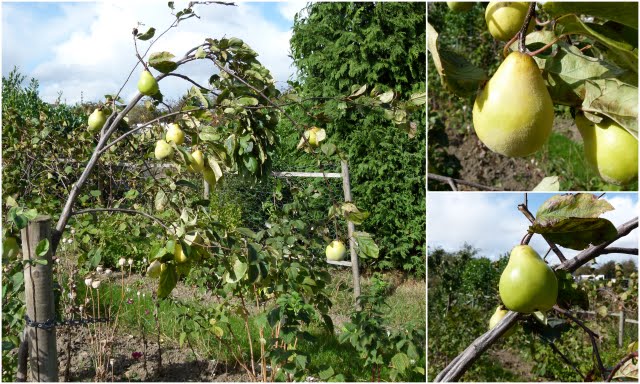Our afternoon's visit to the plot was shorter - due to our silly tradition of moving the clocks back.
I don't know about you but I hate it when it is dark at what in summer still seems to be late afternoon. I don't think winter would be half as bad if it stayed light a bit longer. It's pitch black now and it's only just after 5 o' clock!
Anyway back to the point - the afternoon was shorter but definitely sweet - the sun was shining and as I weeded I was serenaded by the buzzing of busy bees - both bumblebees and honey bees. Now that was a surprise so late in October when I expect the bees to be tucked up in a nest or hive.
The objects of their desires were the borage plants that I grew from some seed kindly sent to me by Bilbowaggins from Bag End.
Borage is often called bee's borage as bees just love it and for them to be able to browse the small but beautiful blue flowers so late in the year is a real bonus - so Bilbo my bees thank you.
The bees were whizzing from flower to flower and the only way I managed to get a photo was to shoot a piece of video and grab a frame. Even then most of the video clips were beeless. The photo below was really all I managed.
Technically borage is an annual herb with edible flowers. I haven't really got into eating flowers so I can't tell you what it tastes like but apparently oil extracted from the flower seeds have the same properties as evening primrose oil.
Despite it being an annual I won't be without borage next year as already some of the self sown seeds have germinated and grown into young plants. The bees will be happy about that and so am I.






















































































